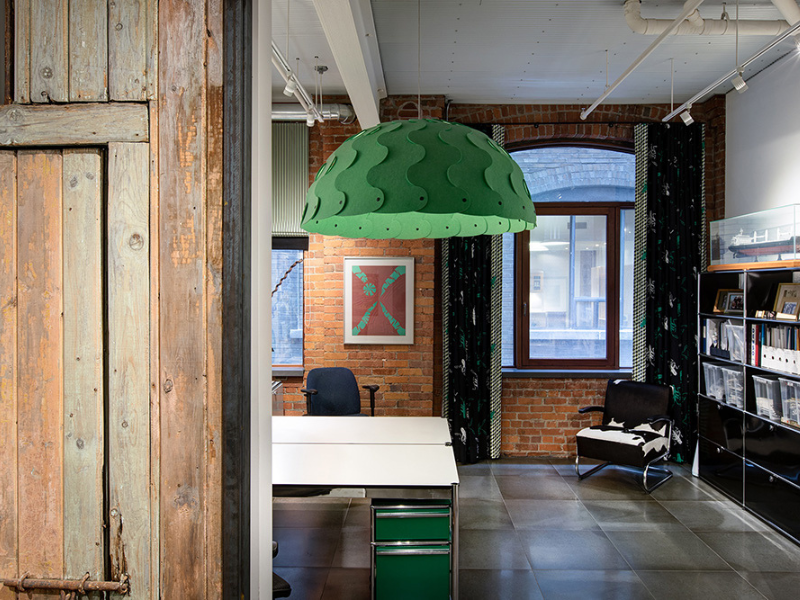The application of light in a work environment is, at its core, a human wellbeing consideration.
Natural light and circadian rhythms are the first application in a space - both the workplace and in a hybrid environment. Daylight is proven to positively increase mood and lower stress, making it particularly essential for more casual or breakout spaces in the office environment. Daylight may cause concerns around glare on screens, so in this application, artificial lighting becomes essential to increase comfort and productivity.

Low glare, uniform general light at appropriate workspace levels is essential, as well as a more localised and personalised light. These tiers of lighting can be designed and installed during an office fitout, or retro-fitted to an existing space. General light outputs require a commercial grade fitting, such as a LED panel, or suspended linear extrusion, but localised light can be incorporated through softer applications such as appropriately positioned pendant lights and easily adaptable desk lamps, such as anglepoise lamps.

Correct lighting when working from home can be more problematic for employers, as this is often an unseen or unprepared space - often not specifically designed for prolonged task work.
The three principles of lighting a home can be translated to a work-from-home space - whether it be a temporary or dedicated space. Encouraging employees to consider these principles when working from home are as important as ergonomic furniture and quiet space.
Natural light - access to natural light throughout the daytime hours will depend on the design of the house, but as a general rule, homes are likely to have natural light throughout parts of the day, although glare and direct sunlight may be a downside to this. Working from home in a space with indirect light is ideal, especially if the desk or workspace cannot be easily moved.
Ambient lighting - work from home hours are not always regular or regulated, so ambient lighting is essential for general light output, and it needs to be low glare, similar to daylight considerations. Here we look to wall and uplights, soft-glow pendants and low level lighting to provide a warm and comfortably lit environment.
Task Lighting - focus intensive activities require a well defined and dedicated task light - often defined by their ability to move and be flexible - table lamps, clamp mount lights or magnetic. Head down intensive activities are benefited by the existence of task lights, both at desk oriented activities and touch down spaces throughout the home. This may be already installed task lighting over dining spaces, or designated reading areas.

While lighting design is a combination of light and science, the difference between a specifically designed work space, and an ad-lib work from home space are two different considerations. While it is important to educate and encourage employees to create a well light WFH space, it can also be advantageous to bring a softness to the office space, encouraging a migration back to the workplace.

Designing workplaces with breakout spaces similar to dining rooms, with textured, organic shaped pendants, using acoustic lighting for quiet space and defining touchdown spaces with grouped or oversized pendants.

Wellness in a hybrid, changing world is essential in many facets, and certainly lighting design has the potential to positively impact spaces where your people and your brand come together, as well as caring for the wellbeing of employees beyond the workspace.

Written and Edited by: Tina Stephen, Lighting Specialist at PLN Group

